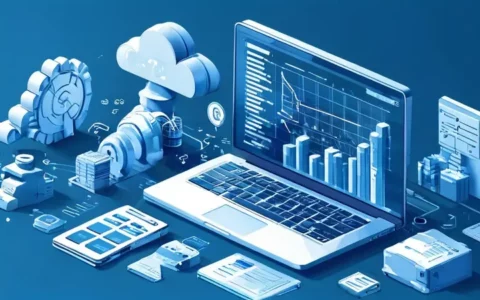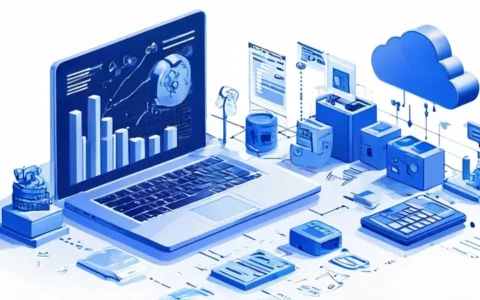
CNC (Computer Numerical Control) is the abbreviation for mechanical programming, which refers to the automated control of machining tools and 3D printers by means of a computer. CNC machines are capable of interpreting design instructions in a programmed alphanumeric format, often known as G-code, to control complex machinery operations with high precision. One of the significant aspects of CNC is its ability to provide consistent and accurate outputs for intricate designs that would be extremely difficult, if not impossible, to replicate manually. This ability revolutionizes the manufacturing process by improving efficiency, accuracy, and repeatability across a wide range of applications.
I. INTRODUCTION TO CNC
CNC, short for Computer Numerical Control, represents an advanced level of precision and automation in the field of manufacturing and fabrication. Utilizing digital instructions derived from a Computer-Aided Design (CAD) or Computer-Aided Manufacturing (CAM) software, CNC machines can perform complex cuts, drills, and shapes with utmost precision.
II. THE HEART OF CNC: G-CODE
G-code is the fundamental language that CNC machines understand. This code includes a series of instructions necessary to carry out specific operations. A deep dive into G-code reveals its efficiency in transforming a digital model into a physical part with intricate details.
III. THE EVOLUTION OF CNC
Tracing the evolution of CNC reveals the transformative impact it has had on the industry. From its rudimentary beginnings to its current sophisticated state, CNC technology has continuously adapted, providing more power and capabilities to the manufacturing sector.
IV. CNC COMPONENTS AND MACHINERY
The core components that make up CNC machinery include the controller, servo motors, and the machine’s axis. Each component plays a key role, and their synergy ensures the flawless execution of commands. Incorporating high-precision servomechanisms, these machines can produce complex parts that meet the design requirements with minimal deviations.
V. APPLICATIONS OF CNC TECHNOLOGY
CNC technology finds applications in numerous fields, from aerospace engineering to the medical industry. Its versatility and precision make it indispensable for producing complex geometries, customized parts, and maintaining quality control.
VI. ADVANTAGES OF CNC OVER TRADITIONAL MACHINING
The superiority of CNC comes from its automation, precision, and consistency. Distinguishing itself from traditional machining, CNC offers remarkable advantages in speed, efficiency, and the potential to minimize human error.
VII. PROGRAMMING FOR CNC
Programming for CNC involves a detailed understanding of both the machine's capabilities and the material properties. An adept programmer can optimize the G-code to enhance production, assuring the execution is seamless and economically viable.
VIII. FUTURE TRENDS IN CNC
Innovations in CNC technology continue to shape the future of manufacturing. With advancements in areas such as artificial intelligence and the Internet of Things (IoT), CNC machinery is poised to become even more autonomous and interconnected.
IX. CONCLUSION
CNC technology stands as a pillar of modern manufacturing, offering unparalleled precision and flexibility. Its continuous evolution signifies a relentless pursuit of perfection and efficiency in the production process, assuring its pivotal role in the industry for years to come.
相关问答FAQs:
1. 机械编程的英文缩写是什么?
机械编程的英文缩写是CAM,即Computer-Aided Manufacturing的缩写。CAM是一种利用计算机技术辅助完成机械加工的方法。它将计算机编程和机械加工相结合,可以自动化地生成机械加工程序,提高生产效率和精度。
2. 机械编程用途广泛吗?
是的,机械编程在许多领域都有广泛的应用。它可以用于制造业中的机械加工和生产过程中,例如汽车制造、航空航天、船舶制造、电子设备制造等。通过机械编程,可以实现自动化的机械操作,提高生产效率、降低成本,并保证产品的质量和精度。
3. 机械编程需要具备哪些技能?
机械编程需要有一定的计算机知识和编程技能。首先,需要了解计算机基础知识,例如操作系统和软件的使用,了解计算机网络和数据存储等。其次,需要熟悉编程语言,例如C、C++、Python等,可以利用编程语言编写机械加工程序。此外,还需要具备机械加工相关的专业知识,例如机械设计、机械加工工艺等。综合这些技能,可以进行机械编程,实现机械加工的自动化和精确控制。
文章标题:机械编程是什么英文缩写,发布者:worktile,转载请注明出处:https://worktile.com/kb/p/2066294

 微信扫一扫
微信扫一扫  支付宝扫一扫
支付宝扫一扫 




